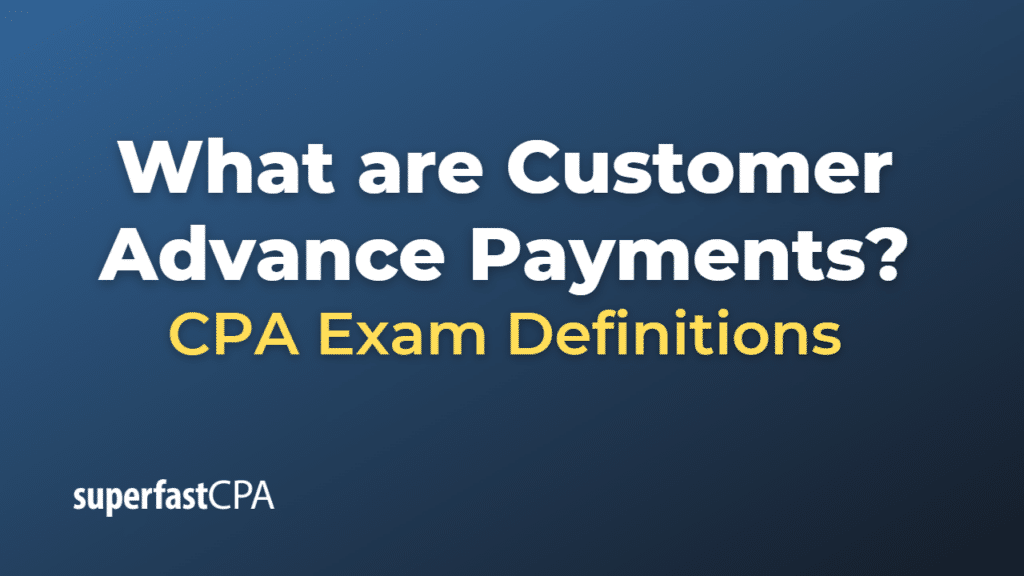Customer Advance Payments
Customer advance payments, also known as unearned revenue or deferred revenue, are payments received by a business from a customer before the goods are delivered or services are rendered.
When a company receives an advance payment, it has an obligation to the customer to deliver goods or services in the future. Because the company still owes something to the customer, the advance payment is recorded as a liability on the company’s balance sheet, not as revenue.
Only when the company fulfills its obligation – that is, it delivers the goods or performs the services – can it recognize the advance payment as revenue. The revenue is then reported on the income statement, and the liability is reduced on the balance sheet.
This method of accounting for advance payments aligns with the revenue recognition principle, which states that revenue should be recognized when it is earned, which is when the goods are delivered or the service is performed, not necessarily when the cash is received.
Customer advance payments are common in various industries. For example, a magazine publisher may receive payments for annual subscriptions in advance. The publisher would record these payments as a liability and then recognize the revenue gradually over the subscription period as the magazines are delivered. Similarly, a software company may receive payments for annual software licenses in advance and would recognize the revenue over the license period as the software is used.
Example of Customer Advance Payments
Let’s take a scenario of a software company, XYZ Software Corp., that sells annual licenses for its software product.
Suppose a customer pays XYZ Software Corp. $1,200 in January for a software license that lasts from January to December of the same year. When XYZ Software Corp. receives this payment, it hasn’t yet delivered the full value of the software license because the customer hasn’t yet had the chance to use the software for the entire year. Therefore, XYZ Software Corp. records this $1,200 as a liability, specifically as deferred revenue or customer advance payments, on its balance sheet.
Now, as each month passes, XYZ Software Corp. is fulfilling part of its obligation to the customer by providing the software service. So, it can recognize part of the advance payment as revenue. In this case, it would recognize $100 of revenue each month ($1,200 / 12 months = $100 per month).
So, in January, XYZ Software Corp. would reduce its deferred revenue by $100 and recognize $100 of revenue on its income statement. It would do the same in February, March, and so forth, until the end of the year, by which time it would have recognized the full $1,200 as revenue and reduced the deferred revenue to zero.
This example illustrates how customer advance payments are accounted for and how they are gradually recognized as revenue as the company fulfills its obligations to the customer.













